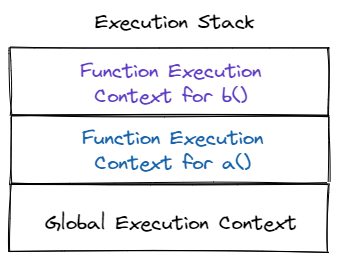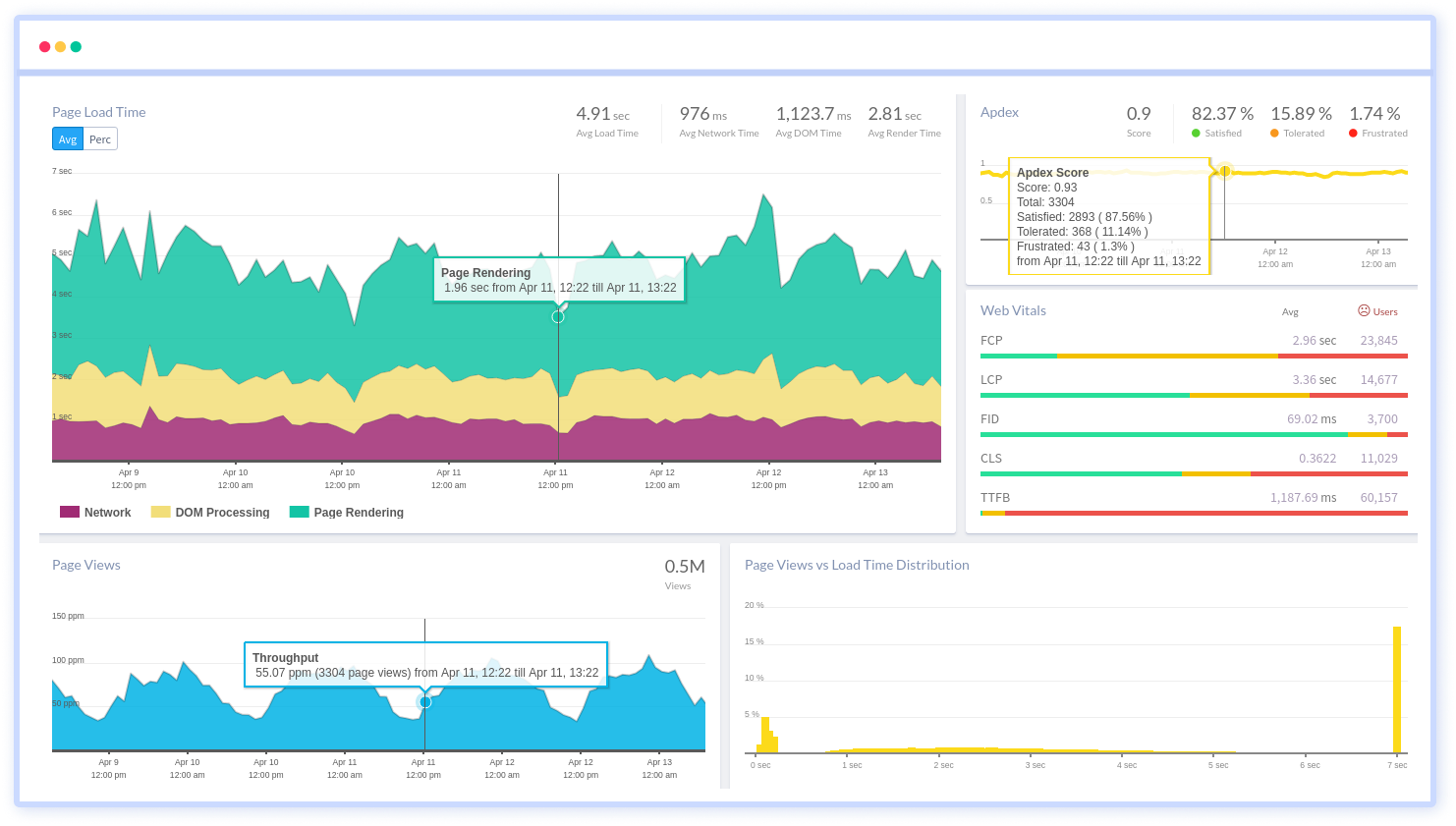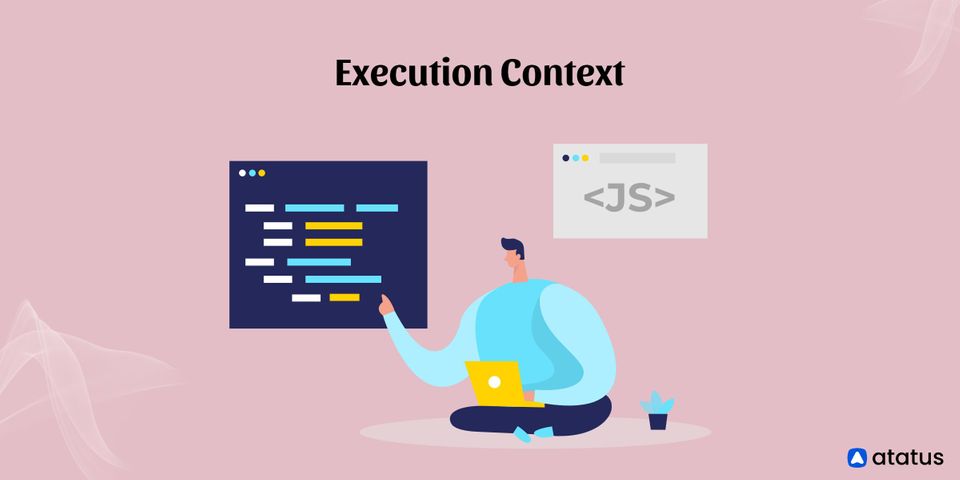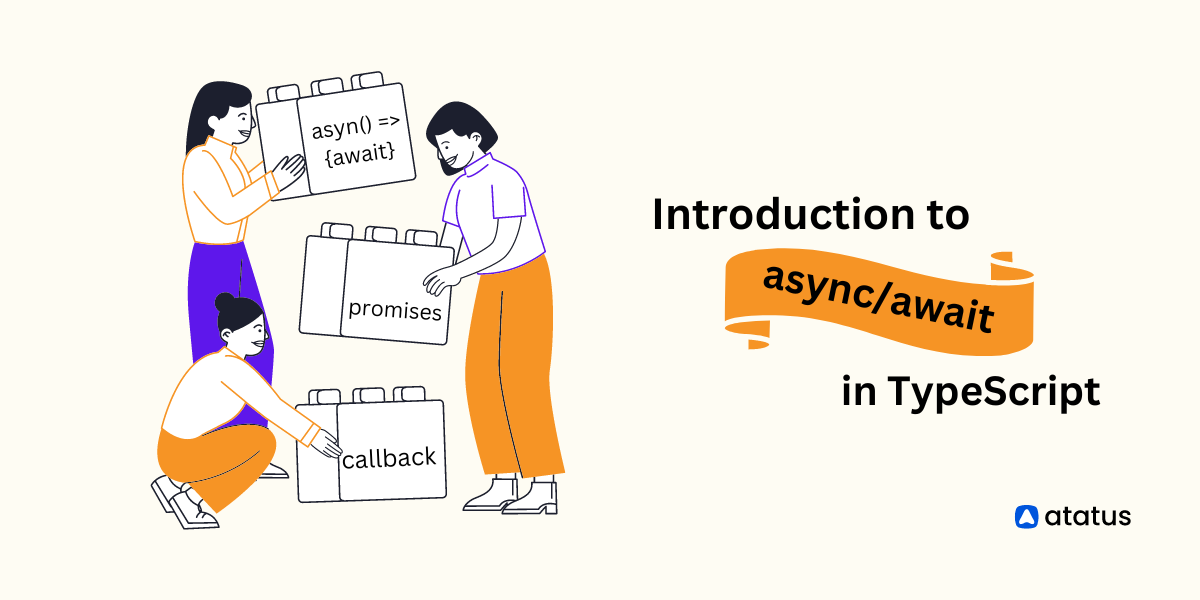A Complete Guide for JavaScript Execution Context
From the standpoint of understanding and complexity of learning, the idea of execution context has been projected as an advanced JavaScript concept in several circumstances. Yes, if not mastered with the right examples in the proper order, this may appear complex. Every newcomer to JavaScript should understand how JavaScript works and why confidence in this fundamental concept is so vital.
The most fundamental aspect of the JavaScript programming language is the execution context. In this article, we'll take a closer look at this concept to see why it's not just important but also simple to grasp.
We will go over the following:
- What is Execution Context?
- Types of Execution Context
- Execution Stack (Call Stack)
- Creating an Execution Context
- Why is the Execution Context Concept Important?
What is Execution Context?
The concept of an execution context is used to describe how a code works inside. JavaScript execution context refers to the environment that allows JavaScript code to be executed. The execution context determines which code section has access to the code's functions, variables, and objects.
The specified code is parsed line by line during the execution context, and the variables and functions are saved in memory. The code is evaluated and then executed in an execution context, which is similar to a container that contains variables. As a result, the execution context creates an environment in which the given code can run.
The more we go into this topic, the clearer it becomes what the environment is. For the time being, think of it as a box containing all of our code.

A new execution context is produced each time your application HTML executes JavaScript functions. In recursive functions, a new execution context is created each time the function calls itself, so you can theoretically have an endless number of execution contexts.
Different forms of code exist in JavaScript. In the global context, there is code. There's also code that's contained within a function context. Within an eval function, there is also code. Each of these distinct categories of code is assessed in its execution context.

In a nutshell, the execution context (EC) is the environment in which JavaScript code is run. By environment, I mean the current value of this, variables, objects, and functions that JavaScript code has access to.
Types of Execution Context
In JavaScript, there are three different types of execution contexts:
#1 Global Execution Context
After loading and parsing the JavaScript code, the JS engine enters the default execution environment. The window object and the this object are created in the global memory by default once the JS engine is inside the global execution environment.
The window object refers to or is connected to the global object, which is always created before the JS engine enters the global execution environment and contains properties and methods like localStorage, innerWidth, and event handlers, among others.
The this object (in the global execution context) is an object that points to or is hooked to the window object.
So, what happens if the JavaScript code has declared variables and functions?
It will search all of the code for all variable and function declarations (variables and functions that are not nested to any other function) and place them in the global memory alongside the window and this object.
#2 Local/Function Execution Context
When a function is called or invoked, a new execution context for that function is formed. When the JS engine sees a function call, it creates a local execution context for that function. By default, the JS engine creates an arguments object, and a this object inside the local execution context.
A key:value pair of parameters anticipated inside a function is stored in the arguments object. It also has a default property called length, which counts how many parameters that function has. When the function's argument is empty, the argument object defaults to a length: 0.
Depending on how the function is invoked, the this object in the function execution context changes. If an object reference is used to call it, the value of this is set to that object. Otherwise, the value of this variable is set to the window object or "undefined".
#3 Eval Function Execution Context
The eval function is a function that should be avoided at all costs. An execution context is constructed and pushed into the call stack whenever the JS engine encounters an eval() function. It evaluates a string that is passed as an argument.
As a result, if you mistakenly sent harmful code as an argument, or if a hostile party uses this area of your code, your website might be badly harmed. This function is not recommended because there are better alternatives.
Execution Stack (Call Stack)
The stack is a data structure for storing values in a LIFO fashion (last in, first out). A JavaScript execution stack, on the other hand, is a stack that keeps track of all the execution contexts created over the script life cycle.
A JavaScript developer should be aware that JavaScript is single-threaded, meaning that it can only perform one task in the web browser at a time. As a result, a stack is established for other actions, functions, and events, which is known as the Execution Stack. The Call Stack is another name for the execution stack.
Global Execution Context (GEC) is located at the bottom of the execution stack, and it is included by default. So, when the JS engine looks for any function in the code (i.e., during Global Execution Context execution). It constructs a Function Execution Context (FEC) for that function and pushes it to the top of the execution context stack.
The JS engine will always execute the execution context that is available at the top of the execution context stack first. When all of the code has been executed, the JS engine pops out the function's execution context and moves on to the next, and so on. When a script loads in the browser (chrome), the global execution context is usually the first thing that appears.
However, when the execution of a function is identified, the execution context is produced and placed on top of the Global Execution Context. The procedure continues until the entire code has been executed.
Consider the following example to better understand how the execution stack works:
- The code is first loaded into the browser.
- The GEC is then pushed/inserted at the top of the execution stack by the JS engine.

- The JS engine creates a new FEC for the initial function call and adds it to the top of the current execution stack as soon as it is encountered.

- The invocation of the second function within the first function may then be seen. As a result, the JS engine creates a new FEC for the second function and adds it to the stack's top.

- When the second function is finished, the execution function is popped off of the stack, and the controls are moved to the next execution context in the stack, which is only the first function execution context.

- When the first function is fully performed, the first function's execution stack is popped out of the stack. As a result, control returns to the code's GEC.

Finally, when the full code has been executed, the JS engine removes the GEC from the current stack and JavaScript stops execution.
Creating an Execution Context
First, an execution context must be created, and then it must be managed. There are two methods for establishing the execution context:
- Creation Phase
- Execution Phase
#1 Creation Phase
The JS engine invokes a function but does not start its execution during the creation phase. The JS engine starts the compilation step in this phase and examines the function code for compiling but does not run it.
During the creation phase, two-state components are created:
- Lexical Environment
- Variable Environment
The following is a conceptual representation of the execution context:
GlobalExecutionContext = {
LexicalEnvironment: {},
VariableEnvironment: {},
}- A Lexical Environment component is a structure based on the lexical nesting structure of JavaScript code that defines the association of identifiers to the values of variables and functions. Binding is the process of associating an identifier with the values of variables and functions.
- A Variable Environment component is a Lexical Environment that defines the relationship between identifiers and the values of variables, but not functions.
The difference between these two is that the identifier is bounded in the variable. The Lexical Environment stores identifier bindings to the values of variables (let and const) and functions, whereas the Variable Environment simply stores identifier bindings to the values of the variable (var).
What is the Lexical Environment made up of?

Environment Record
There is an Environment Record for each Lexical Environment. The identifier bindings that are established inside the scope of the lexical environment are recorded in the Environment Record.
A new Environment Record is created each time JavaScript code is evaluated (var/func declarations or assignments) to record the identifier bindings created by that code. In JavaScript, this environment is referred to as the scope.
The [[OuterEnv]] field of every Environment Record is either null or a reference to an outer Environment Record. The outer environment object is the reason why a child function gets access to its parent's scope.
When the JS engine encounters a variable inside a function, it will look in the current function's environment record for the variable's value (local memory).
If it can't find the variable within, it will search the outer scope (its parent environment record) all the way up to the global scope until it finds it. The scope chain is the name given to this lookup procedure. In future articles, we'll aim to go deeper into the scope chain.
Within the Environment Record, there are three types of subclasses:
- Declarative Environment Record
Variables, classes, modules, and/or function declarations are all stored here, as the name implies. The collection of identifiers defined by the declarations contained inside the scope of a declarative Environment Record is bound. - Object Environment Record
The bindings for all built-in globals are stored in this environment record in the global execution context. The window object that refers to the global object is this one. Global variables and functions are added to the global execution context's object environment record, which is why global variables like a window.localStorage and window.var name can be accessed. The arguments object and this object make up the object environment record in the local/function execution context. - Global Environment Record
Although a global Environment Record is theoretically a single record, it is stated as a composite encapsulating both an object and a declarative Environment Record. It has no exterior environment because it is [[OuterEnv]] is null.
It includes an associated global object whose properties offer some of the global environment's identifier bindings, and it may be prepopulated with identifier bindings. Additional attributes may be added to the global object as JavaScript code is executed, and the initial properties may be updated.
Let us now visualize the execution context within the Creation Phase conceptually. Examine the following JS code:
var name = "Joe";
let input = "Hey!!!";
function broadcast(message) {
return `${name} says ${message}`;
}
console.log(broadcast(input));Note that when we say "conceptually," we don't mean that the pseudocode below is a tangible representation of the environment that the JS engine creates; rather, it's just a way to grasp the concept by visualizing it.
Using the code snippet above, let's try to walk through each stage of what happens during the Creation Phase:
- Creates and pushes a global execution context into the call stack.
- Create bindings between the window and global objects.
- Make this objects bindings to the window object. this object binding will change based on how the function is called and whether the strict mode is enabled.
- Creates an identifier name in global memory with the value undefined as its initial value. Hoisting is the term for this procedure.
- Creates an identifier input in global memory that is not initialized or has no initial value.
- Creates an identifier broadcast in global memory and stores the entire broadcast function specification in it. This is also a hoisted function.
After that, we'll discuss how the JavaScript code is performed.
#2 Execution Phase
After you've completed the creation step, you'll move on to the execution phase. The JS engines scan over the function in the code one more time, updating the variable object with the values of the variables and then running the code, which is known as an execution phase.
Variable binding initializations, variable assignments, mutability and immutability checking, variable binding deletions, function call execution, and so on are all occurring during this phase.
Let's look at the execution stage for the example we just discussed:
- Take the value of the variable name and bind it to the memory's identifier.
- Take the value of the variable input and bind it to the memory's identifier.
- When a console log method is encountered, the arguments are evaluated immediately.
- When it encounters a broadcast function call, it constructs a new local execution context for it and pushes it to the top of the call stack.
- The broadcast function execution context enters the Creation Phase.
- Creates arguments object in the function's local memory with a length of 0 as its starting value.
- To the first index of the arguments object, append the provided parameter message.
- Creates an identifier message and stores the value given to the function call's argument in the function's local memory.
- Inside the function block, the return statement is evaluated.
- When it sees a variable name, it searches the function's local memory for that variable.
- It couldn't find the identifier name in local memory, so it went to its parent scope (global memory) to look for it.
- It locates the identifier name in global memory, then swaps the value to the variable reference.
- When it sees a variable message, it looks up that variable in the function's local memory.
- It locates the identification message in local memory, then swaps the value to the variable reference.
- The evaluated result of the broadcast function execution context is returned and the call stack is popped off.
- With the returned result, pass the control to its caller context (the global execution context).
- It displays in the console, Joe says "Hey!!!"
- The JS engine ends after the global execution context is removed from the call stack.
That's a lot!

There's a lot more going on in the Execution Phase, such as object mutability and immutability checks, but I tried to keep the processes simple so that the primary idea in this article wouldn't get lost.
GlobalExecutionContext = {
LexicalEnvironment: {
EnvironmentRecord: {
DeclarativeEnvironmentRecord: {
input: "Hey!!!",
broadcast: {
LocalExecutionContext: {
LexicalEnvironment: {
EnvironmentRecord: {
DeclarativeEnvironmentRecord: {
message: "Hey!!!",
},
ObjectEnvironmentRecord: {
arguments: {
0: message,
length: 1
}
this: < ref.to window obj. >
},
},
OuterEnv: < ref.to LexicalEnvironment of the GlobalExecutionContext > ,
},
},
},
},
ObjectEnvironmentRecord: {
window: < ref.to Global obj. > ,
this: < ref.to window Obj. > ,
},
OuterEnv: < null > ,
},
},
VariableEnvironment: {
EnvironmentRecord: {
DeclarativeEnvironmentRecord: {
name: "Joe"
},
},
},
}However, if you want to learn more about JavaScript, you can go through the JavaScript Spec.
Why is the Execution Context Concept Important?
According to some research, the human brain has the capacity to store as much information as the entire internet in its memory.

But isn't that something we shouldn't take for granted?
As a result, a reasonable query may be, "Why is this topic important to learn?"
The Execution Context in JavaScript provides the foundation for comprehending many other essential concepts. We frequently encounter a great deal of misunderstanding in each of the following notions simply because we misunderstand the fact underlying Execution Context.
Once we have a thorough understanding of these ideas as JavaScript Developers, we will be able to introduce fewer errors into the source code, become boss at doing outstanding code reviews, have amazing eyes for debugging, and find easier solutions to deal with production issues.
Conclusion
While you don't need to know all of these concepts to be a successful JavaScript developer, having a basic understanding of them will help you clear your head when it comes to the more difficult topics.
Use the JavaScript Visualizer Tool alongside if you're new to the execution context concept. Create simple functions and user-defined variables, then execute them to see how the tool moves them across the execution contexts.
Monitor Your JavaScript Applications with Atatus
Atatus keeps track of your JavaScript application to give you a complete picture of your clients' end-user experience. You can determine the source of delayed load times, route changes, and other issues by identifying frontend performance bottlenecks for each page request.

To make bug fixing easier, every JavaScript error is captured with a full stack trace and the specific line of source code marked. To assist you in resolving the JavaScript error, look at the user activities, console logs, and all JavaScript events that occurred at the moment. Error and exception alerts can be sent by email, Slack, PagerDuty, or webhooks.
#1 Solution for Logs, Traces & Metrics
APM
Kubernetes
Logs
Synthetics
RUM
Serverless
Security
More





